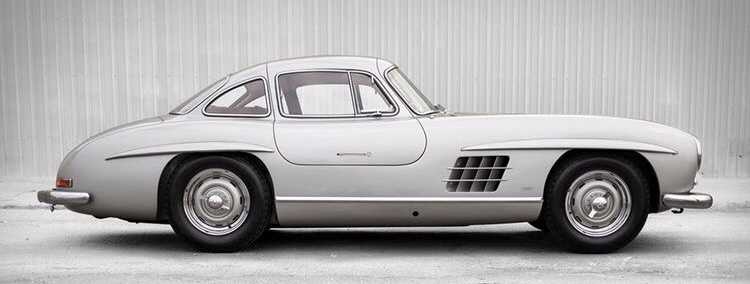Max Hoffman is credited for single-handedly introduce European cars to the USA, world’s largest market for the automobile. Born and raised in Vienna, Hoffman commenced a career importing the most opulent American iron available into Austria, from the likes of Duesenberg, Cord, Auburn, and Pontiac. Fleeing the developing Nazi influence, Max had to start from scratch once in New York. He created and built a successful costume jewelry business which he ran from the early to late 1940’s. Once he saved enough money, he reentered the car dealer business establishing the Hoffman Motor Car Company.
With developed contacts and relationships in Europe, Hoffman’s first few ventures included Jaguar and Volkswagen. He soon realized that American drivers were becoming more interested in American luxurious cars than the ordinary VW. Hoffman understood that he could provide the desired sophistication from Europe. With his impeccable marketing – even summoned Frank Lloyd Wright to design a Park Avenue Showroom – people interest in European automobiles skyrocketed. Soon Americans were buying marques ranged from French Delahayes, to Italian Lancias. As a result of his success, max attracted the attention of other European manufacturers such as Mercedes Benz, Porsche, Alfa Romeo, Aston Martin, and more.
Famously, while in initial conversations, Ferry Porsche hoped that Hoffman would be able to sell five cars a year, to which Max replied that if he couldn’t sell five a week he wasn’t interested. Max did not hit his target in 1951, managing to shift a mere 32 cars, but sales started to gather momentum from then on, and in 1952 he upped a gear and moved 283 cars – 20% of the factory output. In 1954 Max had more than doubled his prediction and was selling 11 cars a week.
By raising to the European manufacturers the existence of a potential demand, Max had direct involvement in the creation of significant iconic sports cars of the postwar era. He was instrumental in creating the Mercedes Benz 300SL. More than 80% of the model’s total production of approximately 1400 units were sold in the US, making it the first Mercedes-Benz widely successful outside its home market and thoroughly validating Hoffman’s predictions. Its success changed the company’s image in America from a manufacturer of solid but staid luxury automobiles to one capable of rendering high-performance sports cars.
Hoffman’s BMW introduction would later mark the end of his efforts as a car importer in the U.S. as he retired from the auto business in 1975, selling off his remaining company to the Bavarian brand. In 1981, Hoffman was laid to rest.



